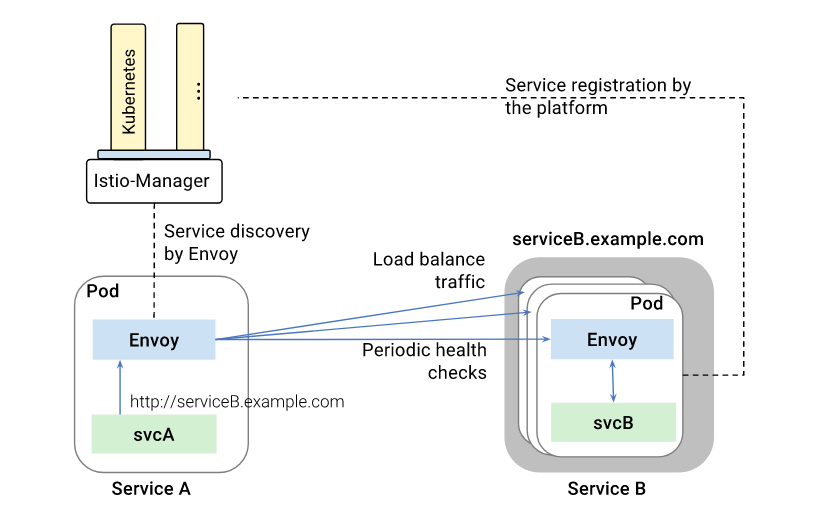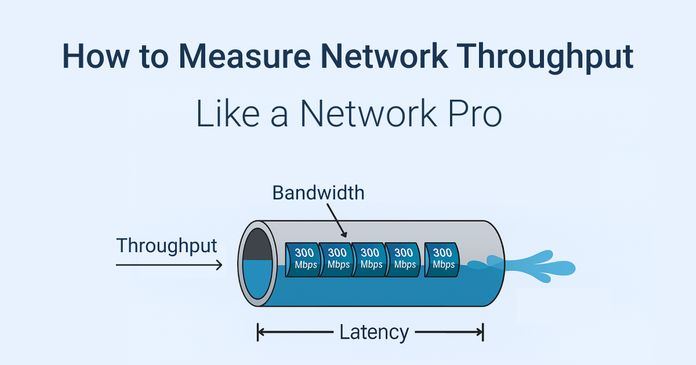Are you struggling with slow or unreliable connections in your mesh network? Balancing the load across your devices can make a huge difference in speed and stability.
When your network traffic is uneven, some nodes get overwhelmed while others sit idle, causing delays and dropped signals. This article will show you simple, effective ways to spread the load evenly, so your mesh network runs smoothly no matter how many devices you connect.
Keep reading to discover how to unlock the full potential of your network and enjoy faster, more reliable internet every time you go online.

Credit: isovalent.com
Mesh Network Basics
A mesh network is a type of wireless network. It connects devices directly or through other devices.
This system helps data move smoothly from one point to another. It balances the load for better performance.
What Is A Mesh Network
A mesh network has many nodes. Each node connects to several other nodes.
Nodes can send data to each other without a central router. This creates many paths for data to travel.
- Nodes work together to share the network load
- Data finds the best path to reach its destination
- The network can fix itself if one node fails
Advantages Over Traditional Networks
Mesh networks offer more reliability than traditional networks. They do not rely on one central device.
They also cover larger areas with fewer dead zones. This helps users stay connected in more places.
- Easy to expand by adding more nodes
- Load balancing improves network speed and stability
- Self-healing network fixes problems automatically
- Better coverage in large or complex spaces
Load Balancing Essentials
Load balancing is key to making mesh networks work well. It spreads traffic evenly across devices.
This helps keep the network fast and stable for all users.
Why Load Balancing Matters
Mesh networks connect many devices to share data. Without load balancing, some devices get too busy.
Busy devices slow down the whole network. Load balancing stops this by sharing tasks fairly.
- Prevents network slowdowns
- Improves data flow and speed
- Increases network stability
- Reduces chances of device overload
Types Of Load Balancing Methods
Different ways balance the load in mesh networks. Each method uses a unique way to share traffic.
Choosing the right method depends on network size and device ability.
- Round Robin: Sends traffic to each device in turn.
- Least Connections: Chooses the device with fewer active tasks.
- Weighted Load Balancing: Sends more traffic to stronger devices.
- Source IP Hash: Uses device IP to decide traffic path.
Techniques For Load Distribution
Balancing load in a mesh network helps keep the network fast and reliable. It spreads the data traffic evenly across all nodes.
This stops any single node from getting too busy. Here are some common techniques used for load distribution.
Round Robin Approach
The round robin approach sends data to each node one after another. It cycles through all nodes in order.
This way, every node gets an equal chance to handle traffic. It is simple and easy to set up.
- Distributes load evenly
- Does not consider node capacity
- Works well in networks with similar nodes
Weighted Load Balancing
Weighted load balancing gives more traffic to stronger nodes. Each node gets a weight based on its capacity.
Nodes with higher weights handle more data. This improves overall network performance.
- Considers node speed and power
- Prevents overload on weak nodes
- Needs setup of weights for each node
Dynamic Load Allocation
Dynamic load allocation changes traffic flow based on current network status. It checks each node’s load in real time.
Traffic moves to less busy nodes to keep balance. This method adapts to network changes quickly.
- Uses real-time data for decisions
- Improves speed during high traffic
- Requires constant monitoring and control
Optimizing Network Speed
Balancing load in a mesh network helps improve network speed. It spreads data traffic evenly across all devices.
This balance reduces slowdowns and keeps connections stable for everyone in the network.
Minimizing Latency
Latency is the delay before data starts moving. Lower latency means faster responses.
To minimize latency, balance traffic so no device is overloaded. This keeps data moving quickly.
- Use routing protocols that choose the fastest path
- Distribute connections evenly among nodes
- Avoid devices with weak signals or high traffic
Bandwidth Management
Bandwidth is the amount of data that can travel at once. Managing it well prevents slow speeds.
Balance the load so no single device uses too much bandwidth. This keeps the network fast for all.
- Set limits on data use per device
- Monitor network traffic to find heavy users
- Adjust bandwidth allocation based on demand
Prioritizing Traffic
Some data is more important than others. Prioritizing traffic helps important data move first.
Give priority to real-time tasks like calls or video. This keeps those services smooth and clear.
- Identify types of data needing priority
- Use Quality of Service (QoS) settings
- Adjust priorities based on network use
Enhancing Network Reliability
Balancing load in a mesh network improves how well the network works. It helps keep connections strong and steady.
When traffic spreads evenly, devices stay connected without delays or drops. This makes the network more reliable.
Failover Strategies
Failover means switching to a backup path if one fails. This keeps data moving without stopping.
Mesh networks use failover to avoid single points of failure. This helps the network stay online during problems.
- Automatic rerouting if a node stops working
- Backup links ready to take traffic
- Quick detection of failed paths
Redundancy Planning
Redundancy means having extra connections or devices. It ensures the network still works if one part breaks.
Good redundancy helps handle high loads and prevents outages. It spreads the traffic across many paths.
- Multiple routes between devices
- Extra nodes to share the load
- Backup power sources for key devices
Self-healing Mechanisms
Self-healing lets the network fix itself after problems. It finds new paths without human help.
This keeps the network running smoothly. It reduces downtime and keeps data flowing.
- Automatic detection of broken links
- Dynamic path updates for traffic
- Real-time monitoring of network health
Tools And Technologies
Balancing load in mesh networks helps keep data flowing smoothly. It spreads work evenly across devices.
Using the right tools and technologies makes this process easier and more efficient. These tools help manage traffic and track network health.
Load Balancers In Mesh Networks
Load balancers distribute network traffic across multiple nodes. They prevent any single node from getting overloaded.
These devices or software work by checking the status of nodes. They send data to the most available and fastest node.
- Hardware load balancers provide high speed and reliability
- Software load balancers offer flexibility and easy updates
- Some use algorithms like round-robin or least connections
- They help improve network performance and reduce delays
Monitoring And Analytics Solutions
Monitoring tools track the network’s performance in real time. They show how much traffic each node handles.
Analytics solutions collect data to find patterns and problems. This helps to adjust load balancing settings for better results.
- Network traffic analyzers detect congestion points
- Performance dashboards display key metrics visually
- Alerts notify administrators about failures or slowdowns
- Logs help diagnose issues after they happen
Real-world Applications
Balancing load in a mesh network helps devices share data evenly. This improves speed and stops slowdowns.
Many real-world systems use this to keep networks stable and reliable.
Smart Homes
Smart homes have many devices like lights, cameras, and speakers. Load balancing keeps all devices connected well.
It stops any single device from using too much bandwidth. This keeps video calls clear and smart devices fast.
Industrial Iot
Factories use Industrial IoT networks to connect machines and sensors. Load balancing helps manage large data flows.
This balance avoids delays in important system alerts. It also keeps production lines running smoothly.
Public Wi-fi Systems
Public Wi-Fi spots serve many users at the same time. Load balancing spreads users across different nodes.
This sharing reduces congestion and keeps the Wi-Fi fast. It helps people stay connected in busy places.
Challenges And Solutions
Balancing load in a mesh network is important for smooth communication. It means spreading data traffic evenly across nodes.
This helps avoid slowdowns and keeps the network running well. Yet, some challenges make this task hard.
Scalability Issues
As a mesh network grows, managing all connections becomes harder. More devices mean more data to handle.
Without good load balancing, some nodes get too busy. This causes delays and drops in data delivery.
- More nodes increase routing complexity
- Uneven traffic causes some nodes to overload
- Network management tools may struggle with large size
Security Concerns
Load balancing can expose weak points in network security. Attackers might target busy nodes to disrupt service.
Data moving through many paths also increases risk. It is important to protect all nodes and data flows.
- Busy nodes can be easy targets for attacks
- More paths mean more places to secure
- Strong encryption helps keep data safe
Handling Network Congestion
Network congestion happens when many devices send data at once. It slows down communication and causes errors.
Good load balancing spreads traffic to avoid crowded paths. This keeps data moving fast and reduces delays.
- Use smart routing to pick less busy paths
- Monitor traffic to adjust load in real time
- Limit data from heavy users to prevent overload
Future Trends
Mesh networks are growing more complex. Balancing the load will need smart solutions.
New technology will help manage data traffic better and faster in these networks.
Ai-driven Load Balancing
Artificial intelligence can analyze network traffic in real time. It can adjust load to prevent slowdowns.
AI learns from data patterns and predicts peak times. It moves data through the best paths automatically.
- Improves network speed and reliability
- Reduces human errors in management
- Adapts quickly to traffic changes
Integration With 5g Networks
5G technology offers faster speeds and lower delays. Mesh networks will use 5G to share data more efficiently.
Combining mesh networks with 5G will support more devices. Load balancing will help handle heavy data flow smoothly.
- Supports many connected devices
- Improves wireless network coverage
- Enables new applications like smart cities

Credit: harsh05.medium.com

Credit: dale-bingham-soteriasoftware.medium.com
Frequently Asked Questions
What Is Load Balancing In Mesh Networks?
Load balancing in mesh networks involves distributing network traffic evenly across all nodes. This helps prevent any single node from becoming overwhelmed, ensuring efficient network performance. By optimizing the distribution of data, load balancing enhances overall network reliability and speed, which is crucial for maintaining seamless connectivity.
How Does Load Balancing Improve Network Performance?
Load balancing improves network performance by evenly distributing traffic across nodes. This prevents congestion and reduces the likelihood of bottlenecks. By optimizing resource usage, it ensures faster data transmission and reduces latency, ultimately enhancing the user experience and maintaining network stability.
Why Is Load Balancing Important In Mesh Networks?
Load balancing is crucial in mesh networks to prevent node overload. It ensures even traffic distribution, enhancing network reliability and speed. By avoiding congestion, load balancing maintains efficient connectivity, supports scalability, and ensures optimal performance, making it essential for robust network operation.
What Challenges Does Load Balancing Address?
Load balancing addresses challenges like node congestion, data transmission delays, and network reliability. It prevents bottlenecks by evenly distributing traffic, ensuring efficient resource use. By mitigating these issues, load balancing enhances network performance, providing a smooth and stable user experience.
Conclusion
Balancing load in a mesh network keeps data flowing smoothly. It helps avoid slowdowns and network crashes. Devices share work fairly, so no single point gets overwhelmed. This improves speed and connection quality for everyone. Simple steps can make your network more reliable.
Good load balance means better coverage and fewer interruptions. A strong mesh network supports all your devices well. Keep these tips in mind to maintain a healthy system. Your network will run better and last longer.
19 min read







